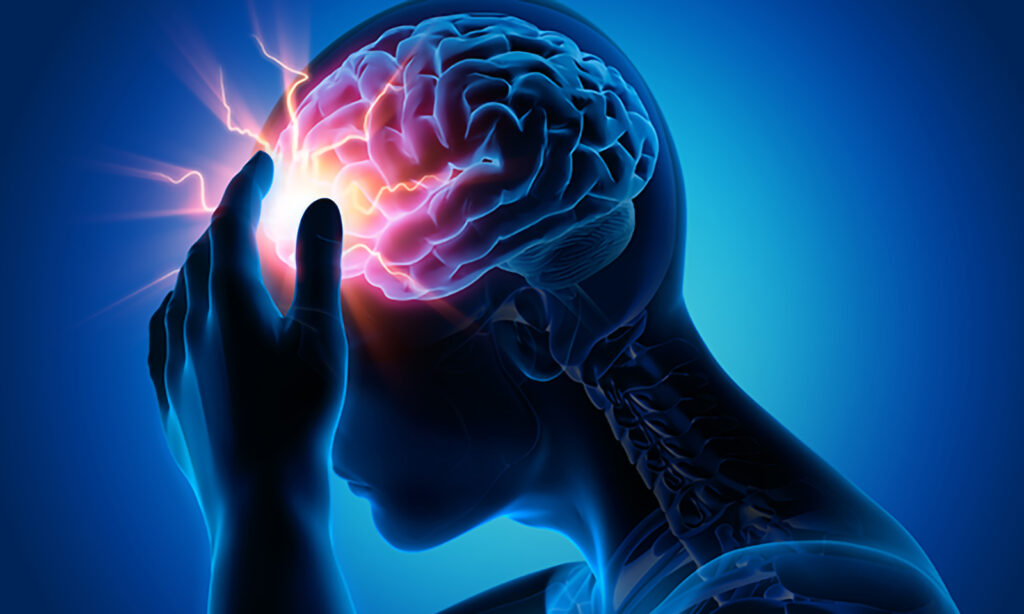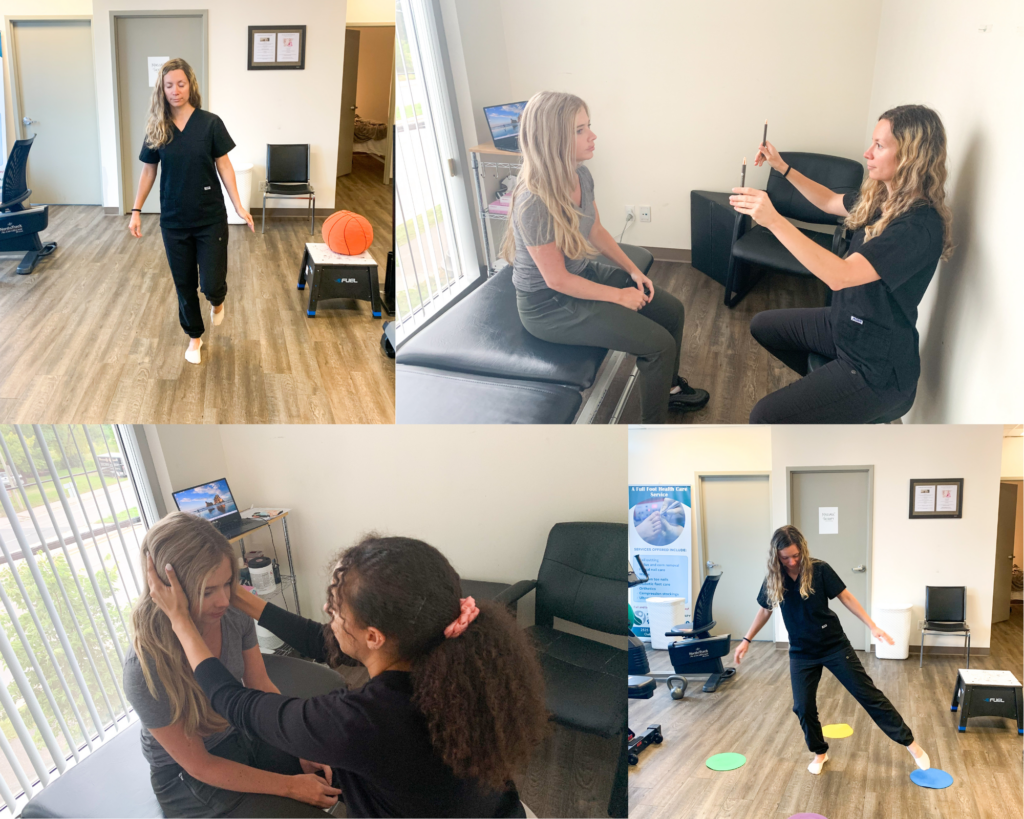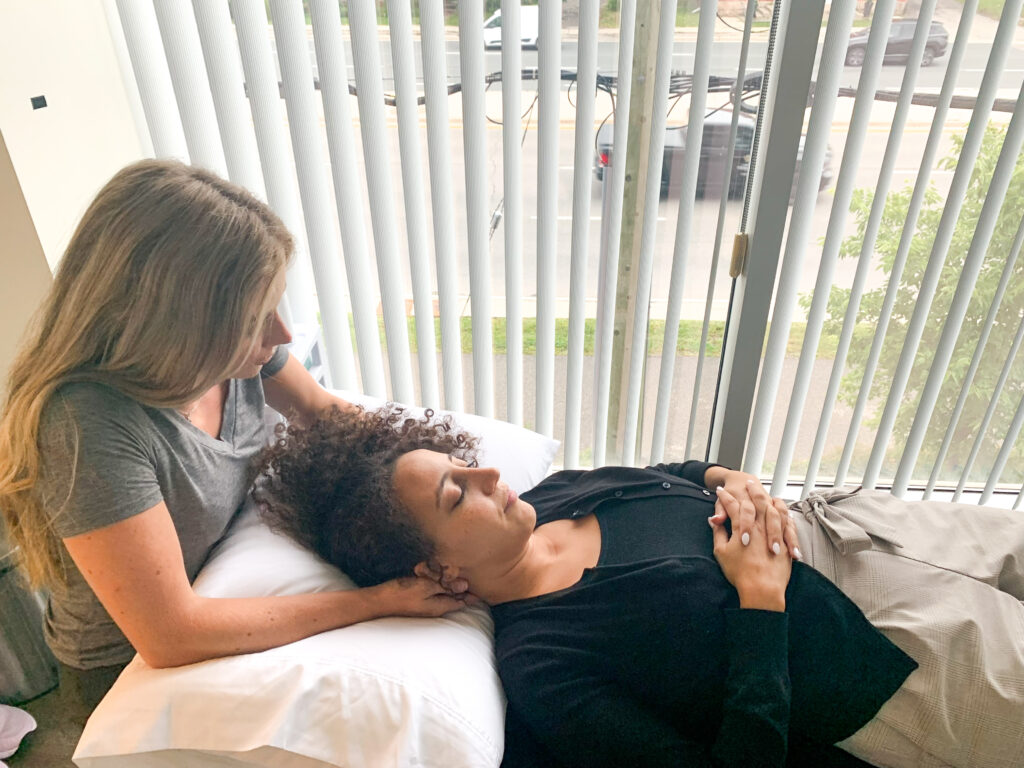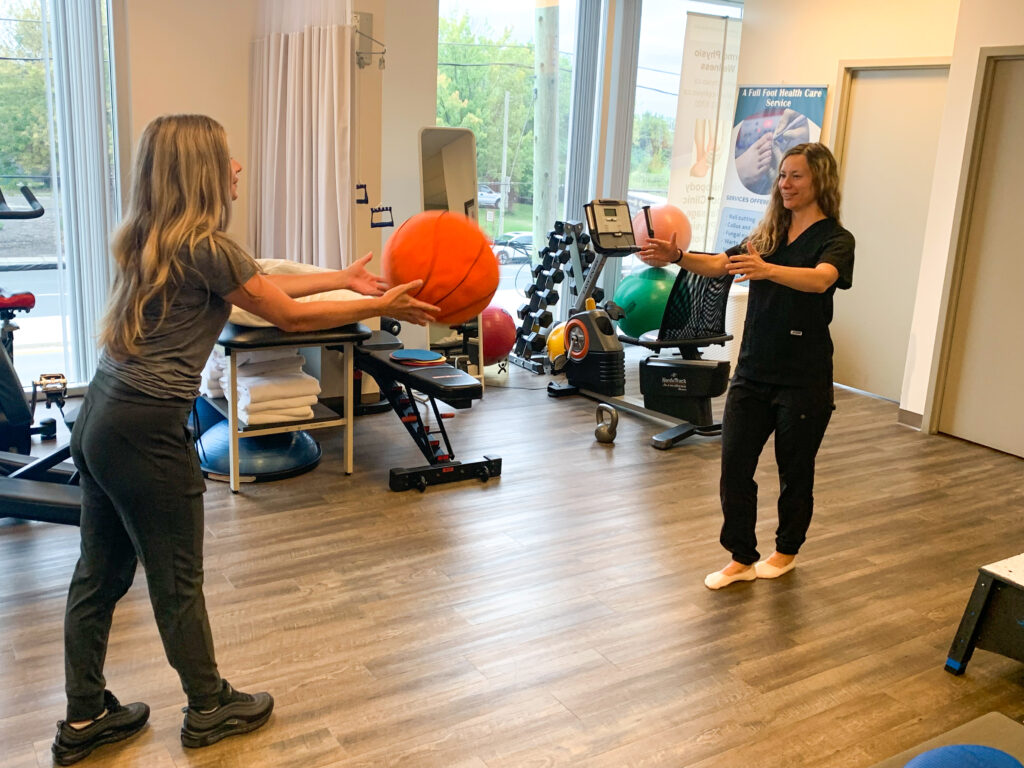
A concussion is a traumatic brain injury. It can be caused by:
- a blow to the head
- impact from a fall
- a sudden acceleration of the head and upper body (e.g., as your head and neck whip forward during a car accident). KEY NOTE – This means you don’t need actual head impact to have a brain injury! This is because the brain can still be injured by the impact against the walls of the skull.
Diagnosing a Concussion…
Signs (observable by others):
- appears dazed and delayed in answering questions.
- Easily confused, appears foggy.
- Slow to respond, slow reaction times.
- forgetful, no memory of the events prior to or immediately after the injury (usually short-term memory loss).
- mood/behavior/personality changes (usually presenting as irritability and/or depression).
- Loss of consciousness (rare).
Symptoms (reported by the patient):
- Headache or “pressure” in the head
- Nausea or vomiting
- light sensitivity
- noise sensitivity
- Feeling foggy or in a daze
- Concentration or memory difficulties
- difficulty reading
- unusual fatigue
- disrupted sleep
- low mood
- Difficulty with balance/dizziness
- Double or blurry vision
- ringing in the ear
- screen intolerance

Signs and symptoms might not be immediately apparent. They may appear hours or days after the injury. Therefore, it’s important to keep checking in after a hit, fall, or whiplash-type injury for the rest of the week.
Sometimes, there can be more serious signs and symptoms indicative of a brain bleed that leads to a hematoma (a dangerous collection of blood that causes swelling in the area and compresses the rest of the brain).
When to call 911 / go to the ER:
- One pupil is larger than the other.
- Extreme drowsiness or not waking up.
- A worsening headache
- slurred speech, weakness, numbness, worsening coordination
- continued vomiting.
- seizures
- loss of consciousness
Note – in infants and toddlers, any of the above signs, inconsolable crying, or continued refusal to feed should all be considered a red flag.
Timeline
Most concussion signs and symptoms resolve within two weeks. It is still normal to have lingering effects for up to 3 months.
However, it is always a good idea to get the concussion checked out by a medical professional (e.g., a family doctor) within the first week.
Do not wait to see if it will resolve before consulting your doctor. Concussions ARE brain injuries, and they can have long-lasting residual effects that affect your daily living.
What helps the healing process?
- Get more rest than usual.
- Pace your activities (e.g., break down into smaller chunks, take microbreaks, stop when symptoms increase).
- hydrate more often.
- Eat more whole foods and focus on food high in omega 3s and 6s.
Why you should see a Physio
Now that we’ve covered what a concussion is and its effects, let’s talk about why Physiotherapy can be an appropriate treatment.
Physio treatment involves:
- Manual therapy (soft tissue and joint mobilizations).
- Exercise therapy (range of motion, strength, stretch, cardio, balance, vision exercises).
- education (on the recovery process, self-management strategies, relaxation techniques especially for improving sleep hygiene, return to work/sport/school).


A combination of these can help with post-concussive symptoms such as:
- fatigue
- Double or blurry vision
- balance impairments
- dizziness
- neck pain
- headaches
- low tolerance for activity (e.g. school, screentime, sports)
Return to activity.
Rest is recommended for the first 24-48 hours with very limited screen time and no exercise. After the first 48 hours, depending on the severity of symptoms, general activity and screen time should be gradually introduced, increasing them based on the level of symptom aggravation (typically mild to moderate symptoms are normal, while moderate to high symptoms indicate the need to stop the activity and wait until symptoms have settled before resuming).
This includes a return to work, whether it is a return to a desk job or a job that is more physically demanding.
Return to sport.
The table below is taken from the Zurich 2012 conference CONSENSUS STATEMENT: McCrory, Paul, et al. “Consensus statement on concussion in sport: the 4th International Conference on Concussion in Sport held in Zurich, November 2012.
| GRADUATED RETURN TO PLAY PROTOCOL | ||
| Rehabilitation Stage | Functional exercise at each stage of rehabilitation | Objective of each stage |
| 1. No activity | Symptom limited physical and cognitive rest | Recovery |
| 2. Light aerobic exercise | Walking, swimming, or stationary cycling keeping intensity <70% maximum permitted heart rate. No resistance training | Increase HR |
| 3. Sport-specific exercise | Skating drills in ice hockey, running drills in soccer. No head impact activities | Add movement |
| 4. Non-contact training drills | Progression to more complex training drills, e.g. passing drills in football and ice hockey. May start progressive resistance training | Exercise, coordination, and cognitive load |
| 5. Full-contact practice | Following medical clearance participate in normal training exercise | Restore confidence and assess functional skills by coaching staff |
| 6. Return to play | Normal game play | |
Contact us to learn more or book an initial assessment here to get started with your therapy today!
